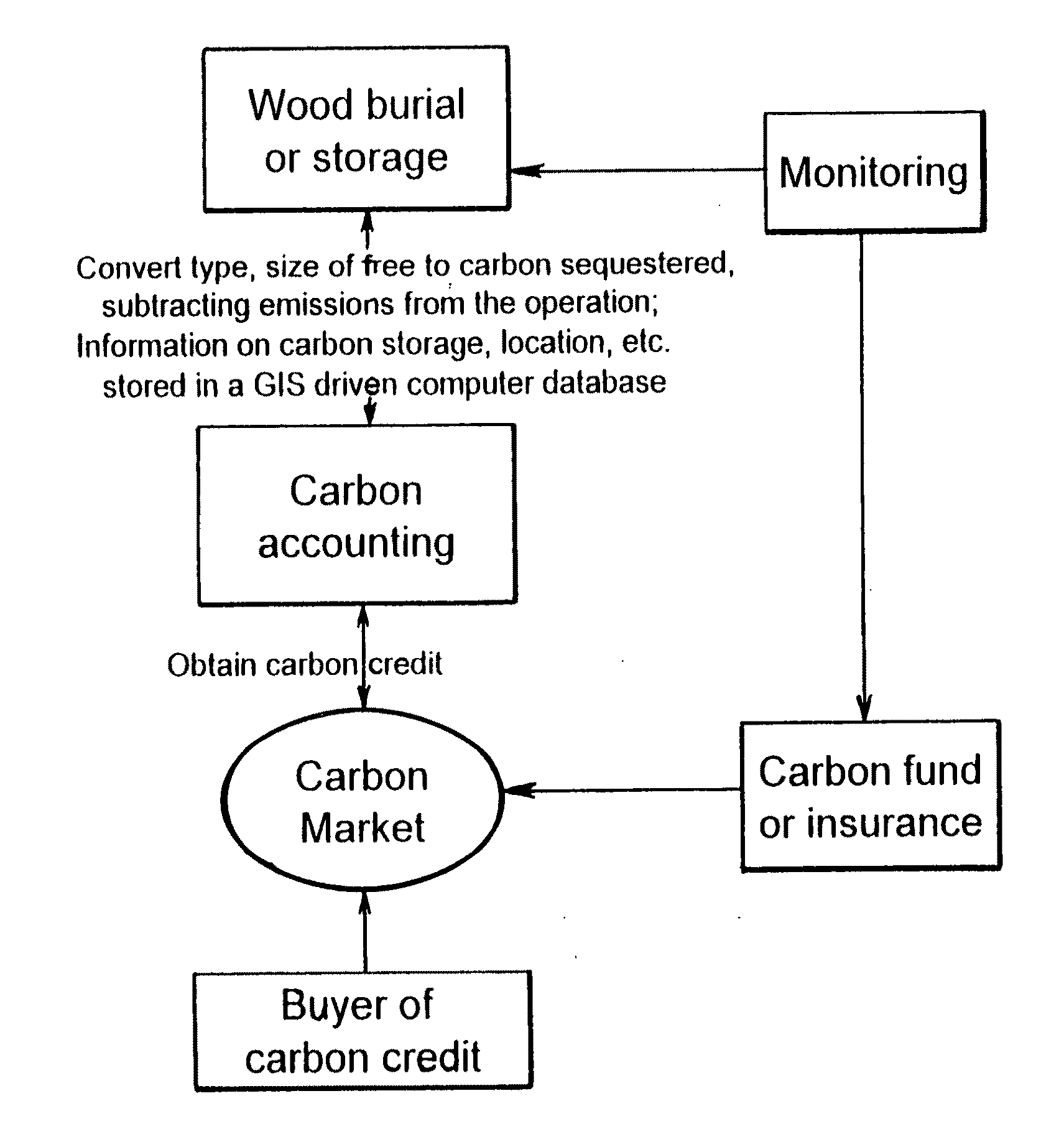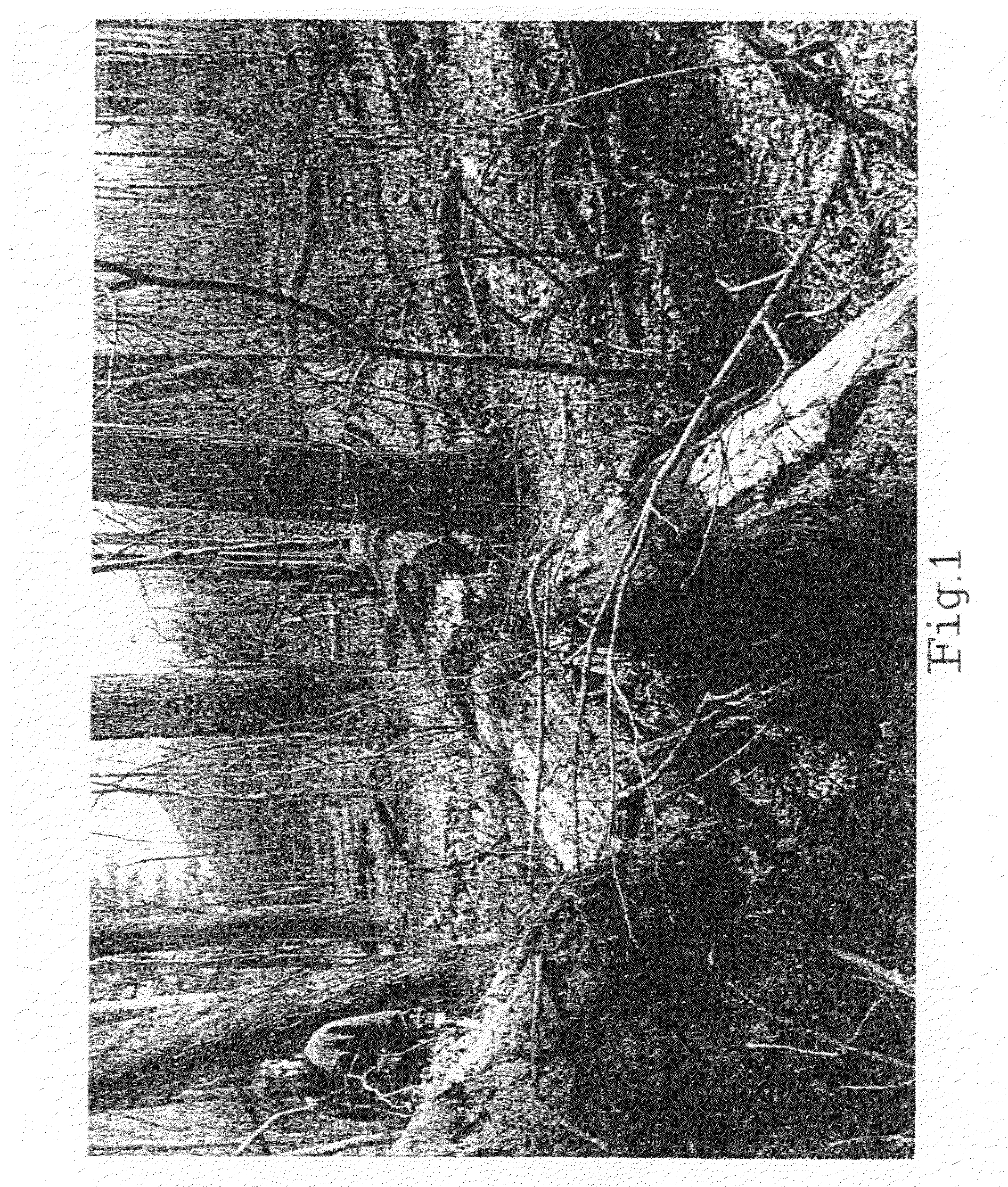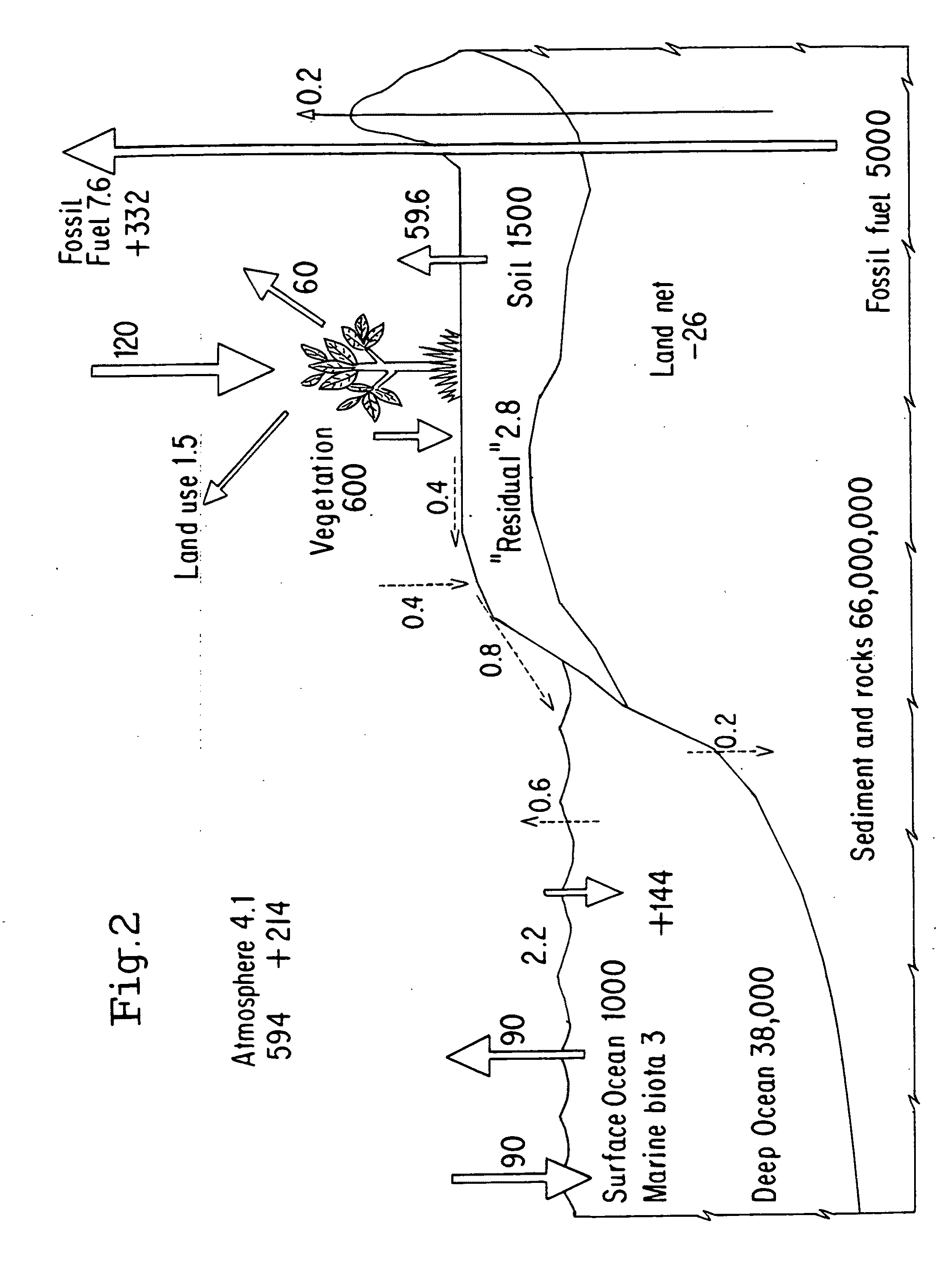Carbon sequestration via wood burial and storage
a carbon sequestration and wood technology, applied in the field of managing forests, can solve the problems of inability to switch infrastructure for many decades, the potential and permanence of biospheric techniques are unclear, and the decomposition of buried wood is assumed to be much more expensive. , to achieve the effect of slowing down the decomposition of buried wood
- Summary
- Abstract
- Description
- Claims
- Application Information
AI Technical Summary
Benefits of technology
Problems solved by technology
Method used
Image
Examples
Embodiment Construction
[0040]To quantify the size of the potential carbon sink, the global dynamic vegetation and terrestrial carbon model VEGAS was used (Zeng, N. (2003), Glacial-interglacial atmospheric CO2 change—The glacial burial hypothesis, Advances in Atmospheric Sciences, 20(5), 677-693; Zeng, N., et al. (2004), How strong is carbon cycle-climate feedback under global warming?, Geophysical Research Letters, 31(20); Zeng, N., et al. (2005), Impact of 1998-2002 midlatitude drought and warming on terrestrial ecosystem and the global carbon cycle, Geophysical Research Letters, 32(22), all incorporated herein by reference). VEGAS simulates the dynamics of vegetation growth and competition among different plant functional types (PFTs). It includes 4 PFTs: broadleaf tree, needleleaf tree, cold grass, and warm grass. The different photosynthetic pathways are distinguished for C3 (the first three PFTs above) and C4 (warm grass) plants. Phenology is simulated dynamically as the balance between growth and re...
PUM
 Login to View More
Login to View More Abstract
Description
Claims
Application Information
 Login to View More
Login to View More - R&D
- Intellectual Property
- Life Sciences
- Materials
- Tech Scout
- Unparalleled Data Quality
- Higher Quality Content
- 60% Fewer Hallucinations
Browse by: Latest US Patents, China's latest patents, Technical Efficacy Thesaurus, Application Domain, Technology Topic, Popular Technical Reports.
© 2025 PatSnap. All rights reserved.Legal|Privacy policy|Modern Slavery Act Transparency Statement|Sitemap|About US| Contact US: help@patsnap.com



